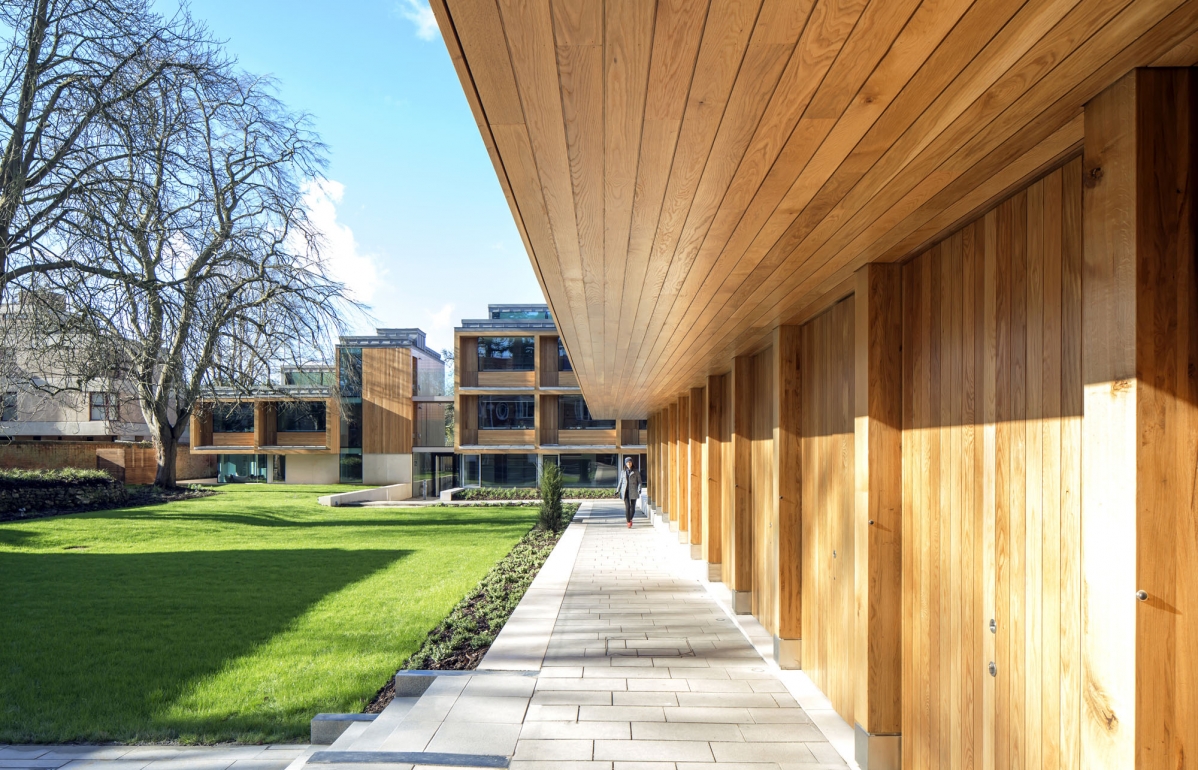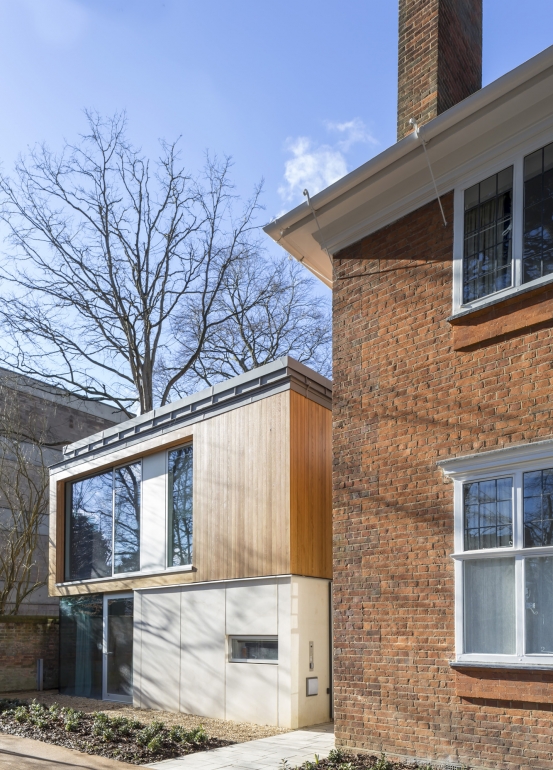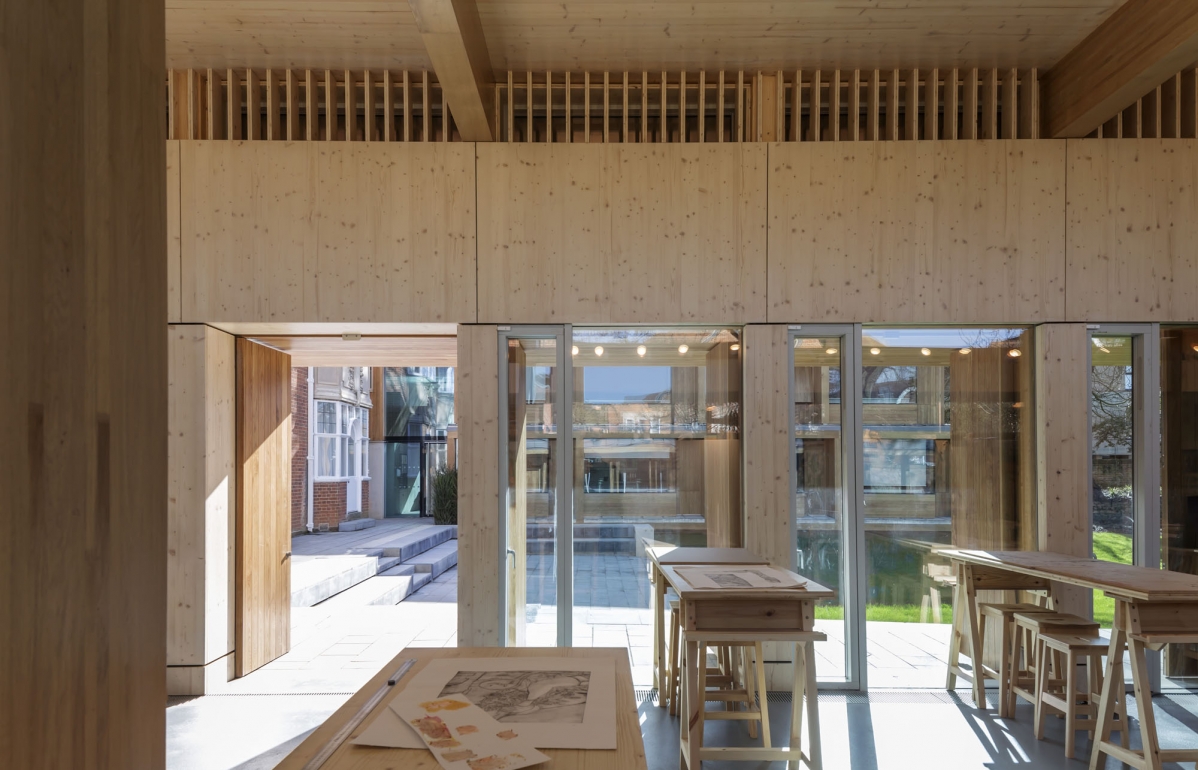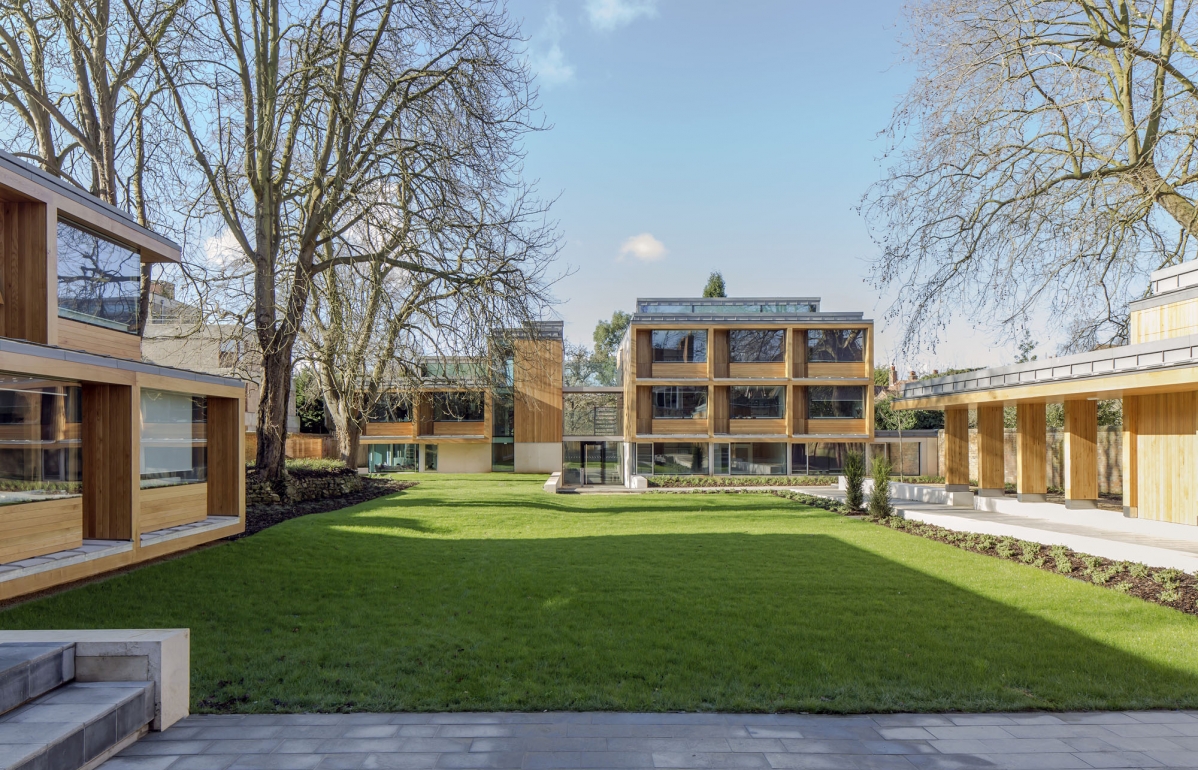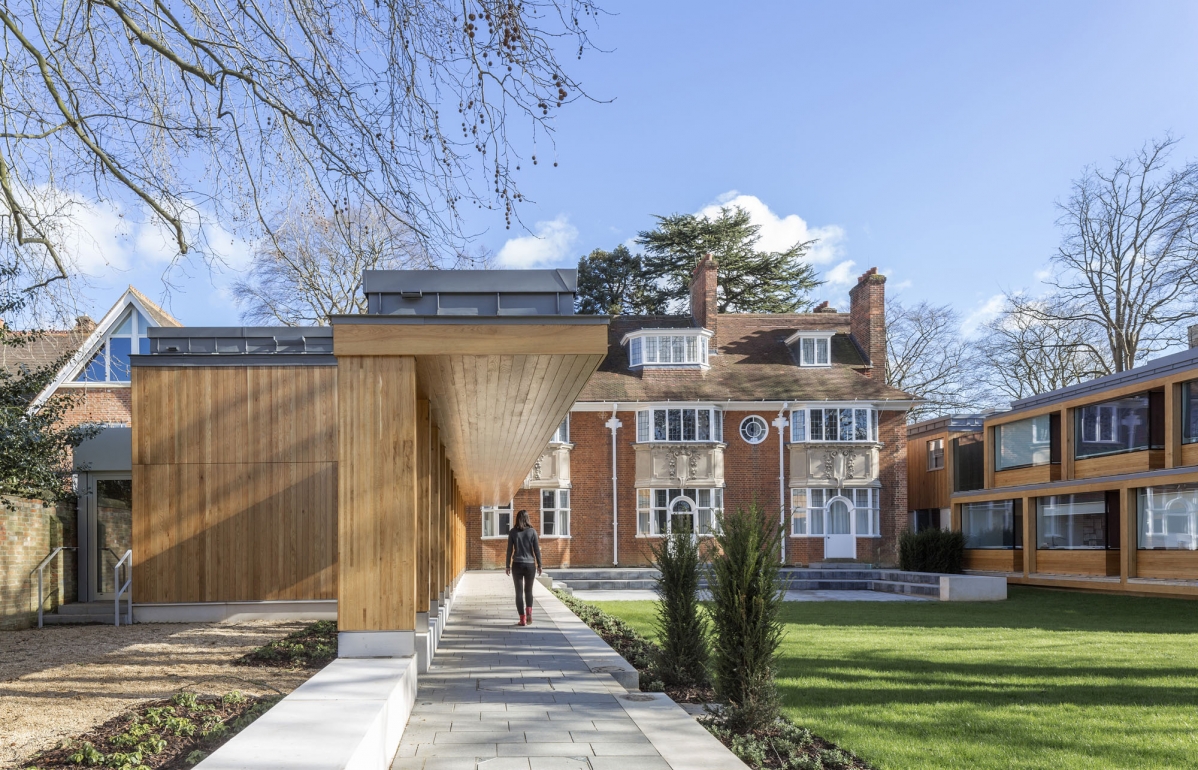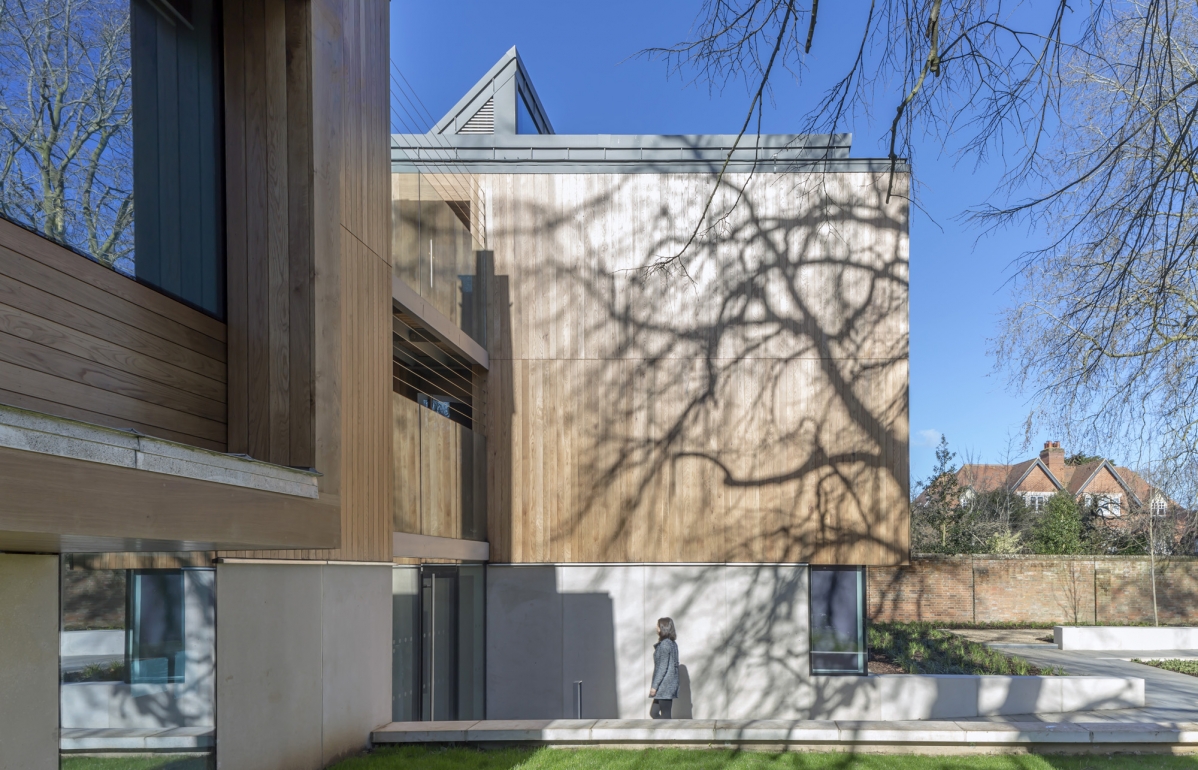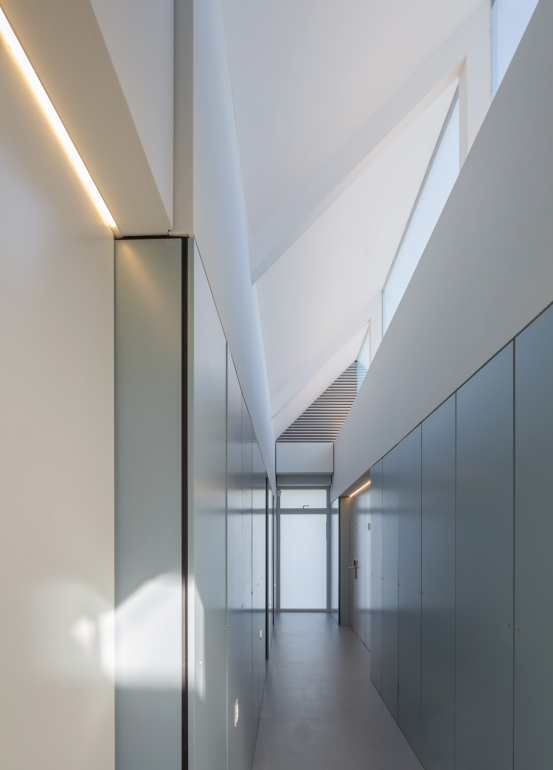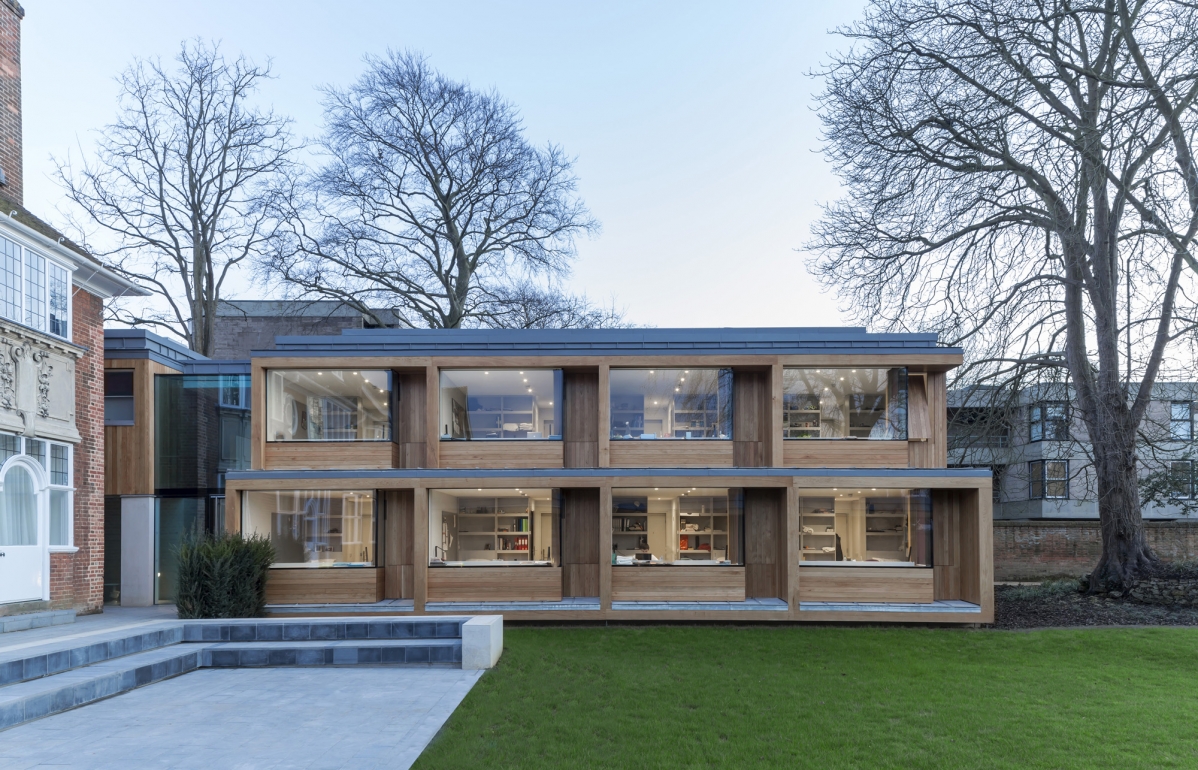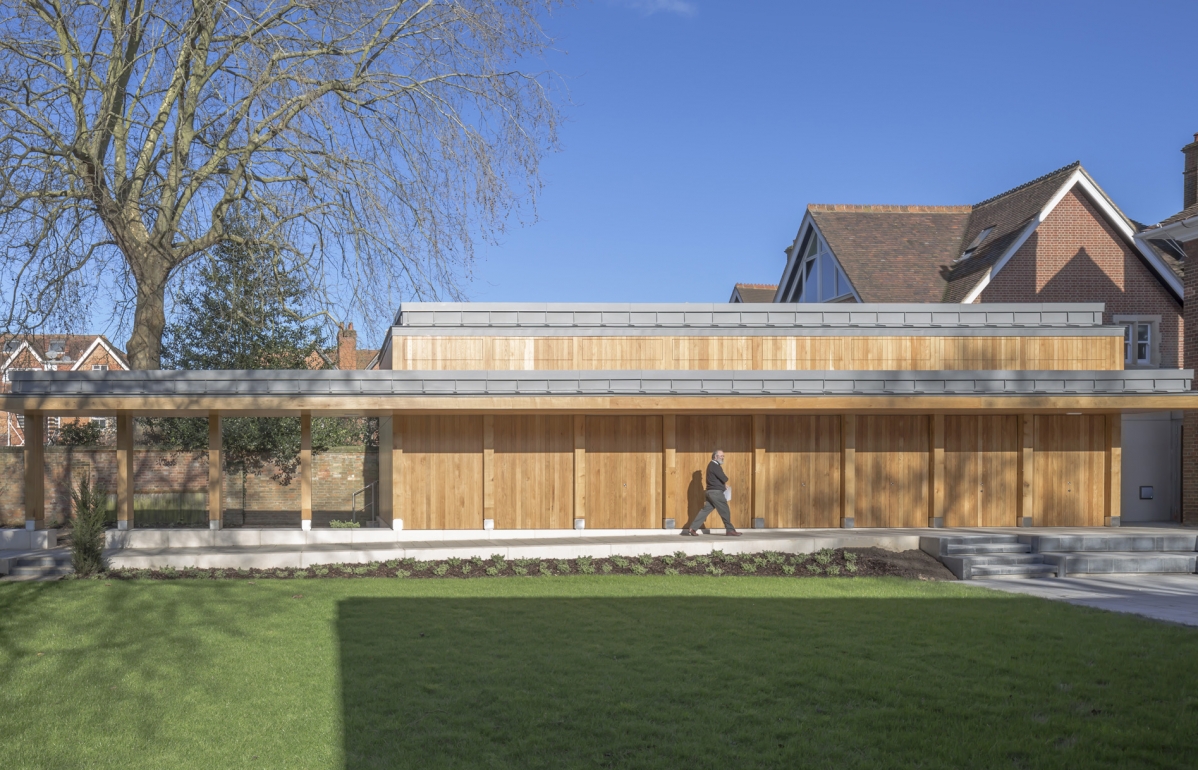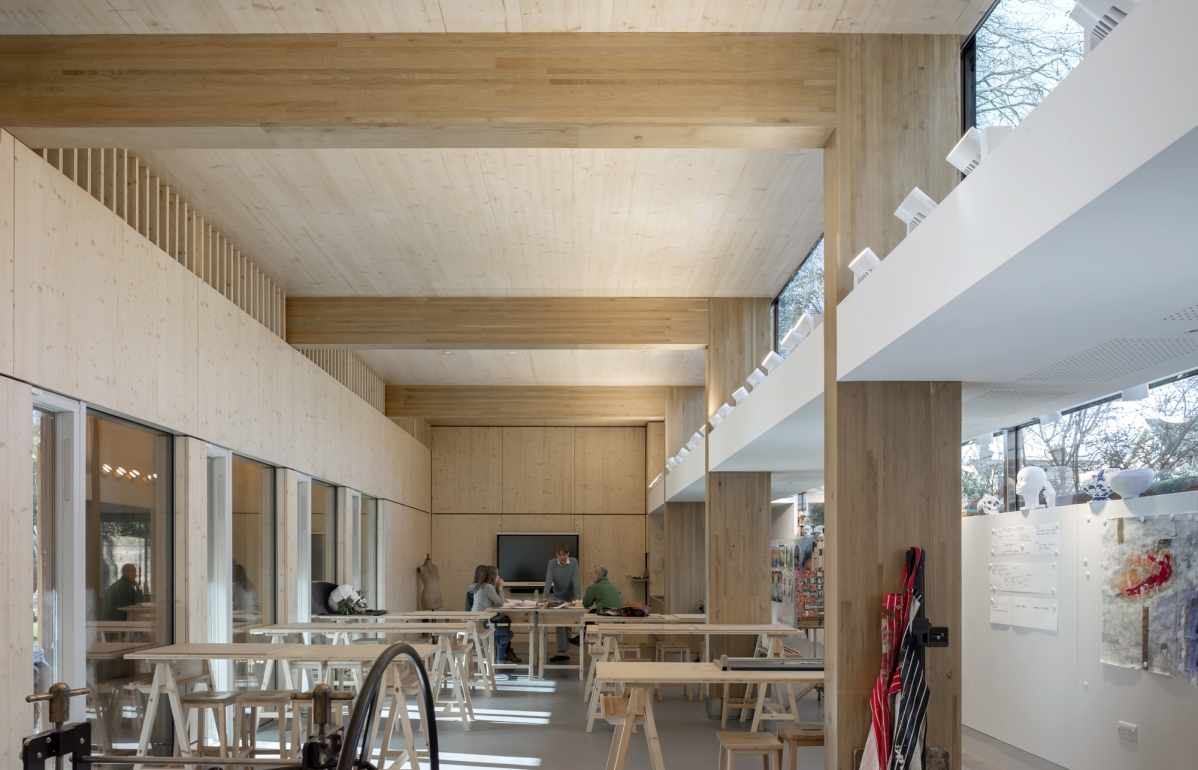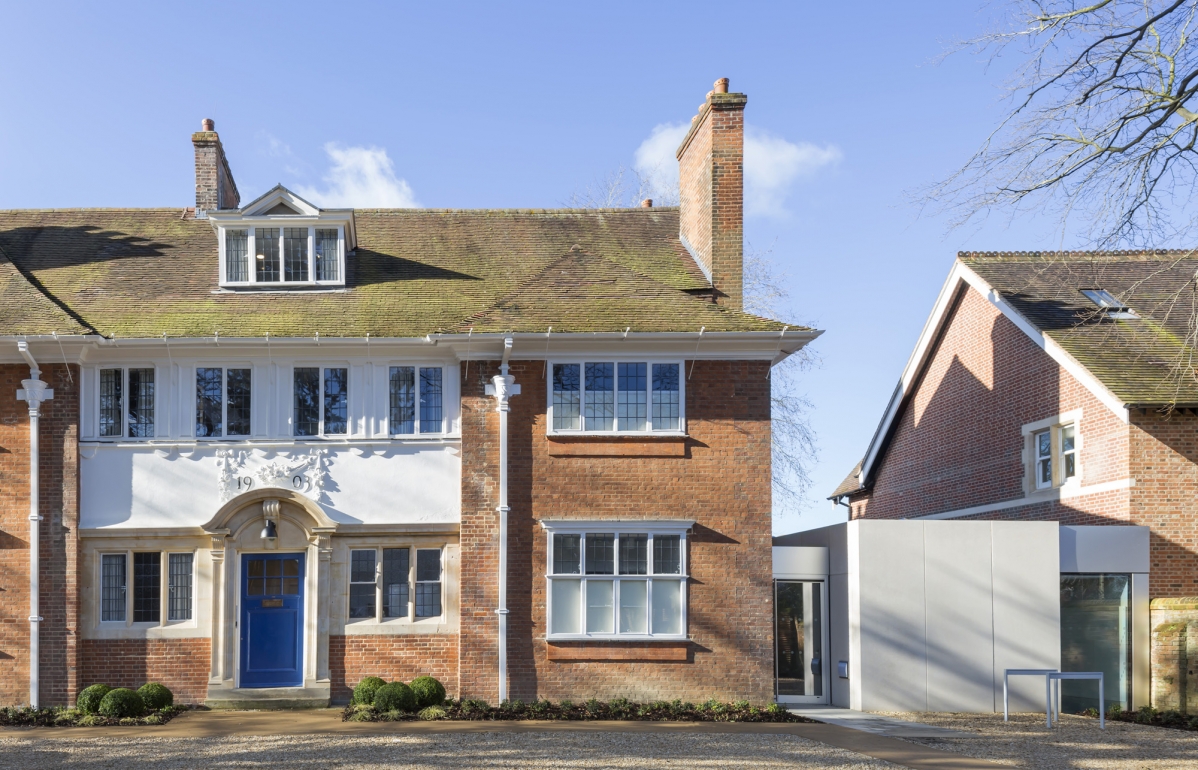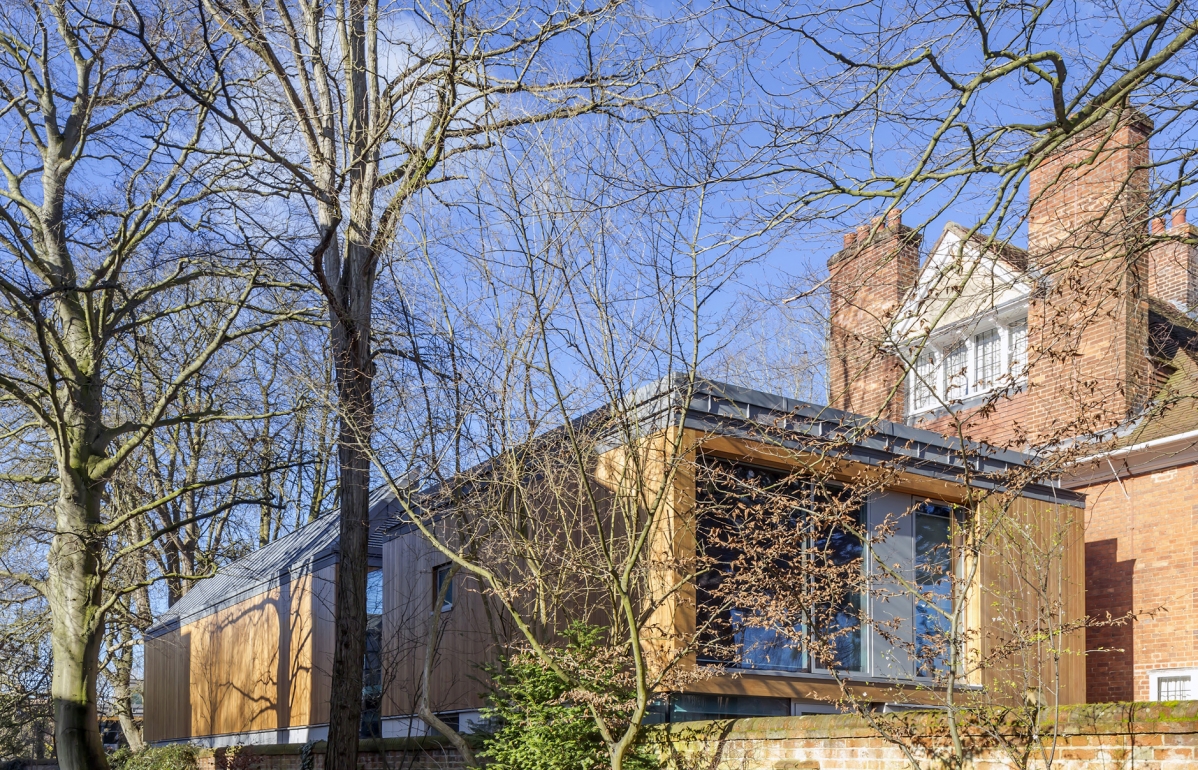Our competition winning proposal comprises five individual buildings arranged around a new quadrangle, and woven between existing mature trees, with a restored Grade II listed Arts and Crafts house by architect Henry T. Hare at the head. In all, the accommodation includes 36 study bedrooms, rooms for three wardens, two common rooms, and an art studio.
To the south side of the 1903 house, a new Warden’s lodge acts as a ‘hinge’ between the house and a tiered pavilion of student accommodation (which sits roughly on the site of the deconsecrated chapel). The art studio is built up to the existing north garden wall. This mode of appropriation, building-up to garden walls is quite typical to Oxford, evident particularly with the outbuildings to several large properties along Banbury Road. Together, both wings enhance the near symmetry of the existing house, framing the aspect towards the garden and the orchard beyond.
The two residential pavilions at the bottom of the garden are sunk by half a storey into the ground so as to reduce the visual impact to neighbouring properties. Orientations of outlook are both east into the garden and west towards the orchard. A bridge link delicately connects the two blocks at first and second floor levels. The common room to the smaller block opens out onto its own partially sunken terrace.
The residential pavilions are constructed of oak-clad cross laminated timber (selected because of the constrained nature of the site), their cellular nature clearly expressed. Structurally glazed oriel windows optimise on views into the garden, with oak purge ventilation panels set deep into the construction. The material language seeks to reinforce the notion of pavilions in a garden; upper storeys are articulated over the landscape with the lodge and garden pavilion having a base of precast concrete, and the south pavilion cantilevering over the lawn.
The naturally-ventilated art studio has a glulam portal frame in oak. Its sectional profile allows it to sit behind the garden wall, whilst allowing natural light to permeate the space by a structurally-glazed clerestory. The portal frames extend into the garden to define both a loggia (to which the studio is accessed by large oak doors) and an implied cloister to the garden pavilions.
“The new additions are finished in beautiful materials inside and out, but perhaps more importantly the sculptural and spatial experiance throughout is finely wrought, rich and light-filled. The money has been well spent.”
Adrian James,
Architects Journal

